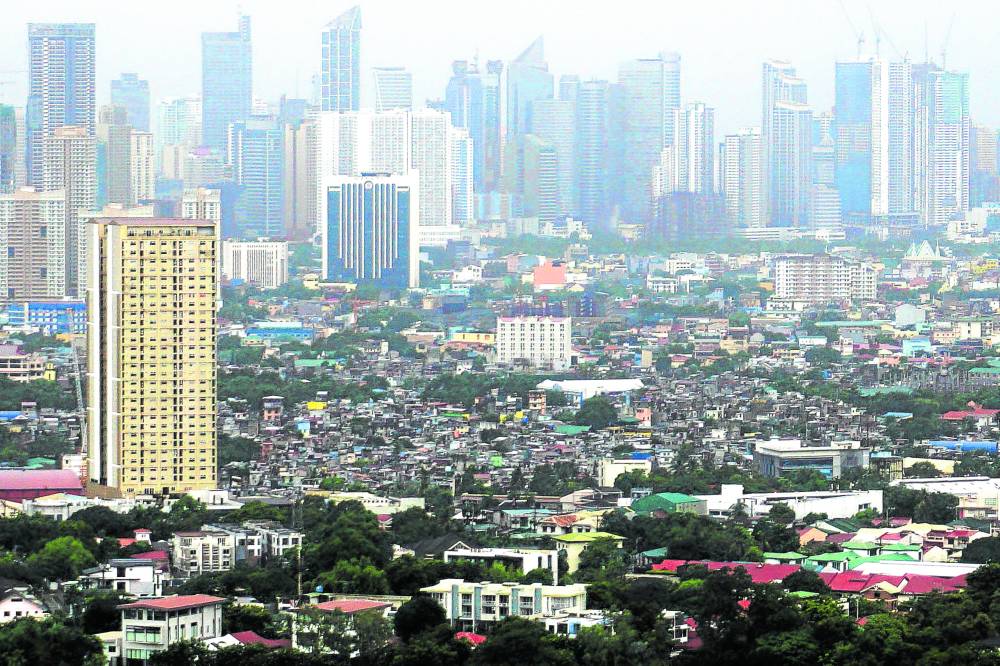Marcos faces economic setback: 2023 growth plummets to lowest levels since 2011

INQUIRER file photo
MANILA, Philippines —The Marcos administration fell short of its growth goal last year due to significant inflation, resulting in a 5.6 percent gross domestic product (GDP) growth in 2023.
This marked a slowdown from the 7.6 percent expansion in 2022, as reported by the Philippine Statistics Authority (PSA) on Wednesday. Excluding the severe economic downturn in 2020, the 2023 growth was the lowest since 2011.
The figure nevertheless surpassed the median 5.4-percent growth seen in the Inquirer’s compilation of GDP projections from 14 institutions.
The full-year 2023 figure was also among the fastest in the region, outpacing growth posted by China (5.2 percent), Vietnam (5 percent), and Malaysia (3.8 percent), according to the Department of Finance.
“The strong economic performance in 2023 is a clear testament to the government’s efforts in creating an environment conducive to enhancing the purchasing power of Filipinos. We are firm in our commitment to ensure that our economic progress is felt in the day-to-day lives of our people,” Finance Secretary Ralph G. Recto said in a statement.
READ MORE: PH December inflation eases to 3.9%
At a press conference, Secretary Arsenio Balisacan of the National Economic and Development Authority said growth would have been stronger last year if not for the brutally high inflation and the aggressive interest rate hikes meant to tame fast-rising consumer prices.
“We are concerned about the low growth in real spending on food due to high food prices, though it has moderated in recent months,” Balisacan said.
“While this growth is below our target for this year, this keeps us in the position of being one of the best-performing economies in Asia,” he added.
Consumer spending
In the fourth quarter of last year, GDP also grew at an annualized rate of 5.6 percent, slower than the revised 6-percent expansion in the preceding quarter.
Dissecting the PSA’s report, consumer spending, a traditional growth driver, quickened to 5.3 percent in the final three months of 2023, from 5.1 percent in the previous quarter, due to the seasonal uptick in demand during the holiday season. That performance would have been more impressive if inflation was not a big problem last year, Balisacan said.
Data also showed government expenditures declined by 1.8 percent in the fourth quarter, a turnaround from the 6.7-percent growth in the third quarter, after the state’s efforts to catch up on spending were restrained by the need to keep the budget deficit in check.
READ: PH GDP growth likely to miss gov’t targets for 2024, 2025
Shivaan Tandon, economist at London-based Capital Economics, said expensive borrowing costs and sluggish global economic growth would weigh on the Philippines in the quarters to come. For this year, the Marcos administration wants the economy to grow by 6.5 to 7.5 percent, a less upbeat outlook than its previous target of 6.5 to 8 percent expansion.
Debt burden eases
“With the drag from higher interest rates yet to filter through the economy in its entirety and global demand likely to weaken, we continue to expect below trend growth in the coming quarters,” Tandon said.
The economic growth brought the debt-to-GDP ratio to 60.2 percent by the end of 2023, down from 60.9 percent in 2022, the Bureau of the Treasury said in a separate report.
READ MORE: Lower borrowings, faster growth trim debt-to-GDP ratio to 60.2%
Near-target 2023 GDP growth acceptable amidst economic challenges – Neda chief
The ratio however stayed above the 60-percent threshold that credit rating agencies deemed manageable for developing economies like the Philippines. This, as the government capped 2023 with an outstanding debt amounting to P14.62 trillion, up by 8.92 percent year-on-year.
The debt-to-GDP ratio is a closely watched indicator of the government’s ability to settle its obligations. Economists believe that debt would stay at manageable levels as long as the economy grows faster than state liabilities.
Disclaimer: The comments uploaded on this site do not necessarily represent or reflect the views of management and owner of Cebudailynews. We reserve the right to exclude comments that we deem to be inconsistent with our editorial standards.
